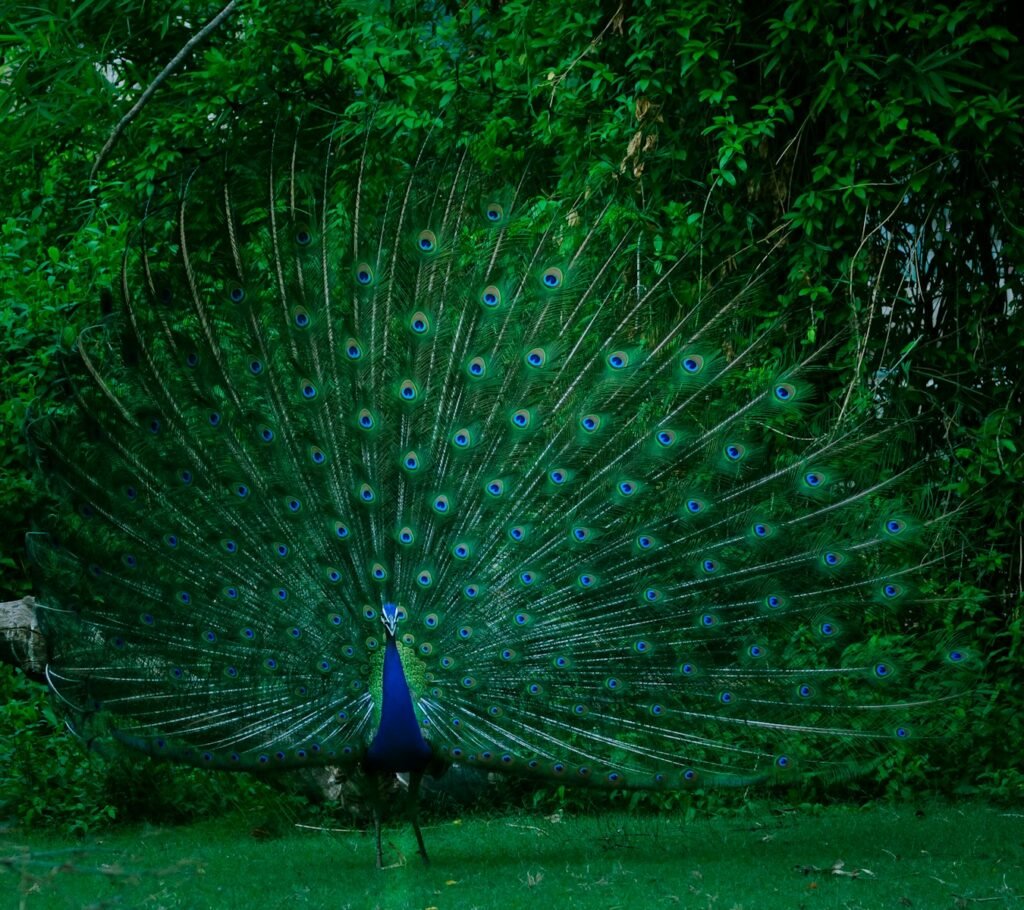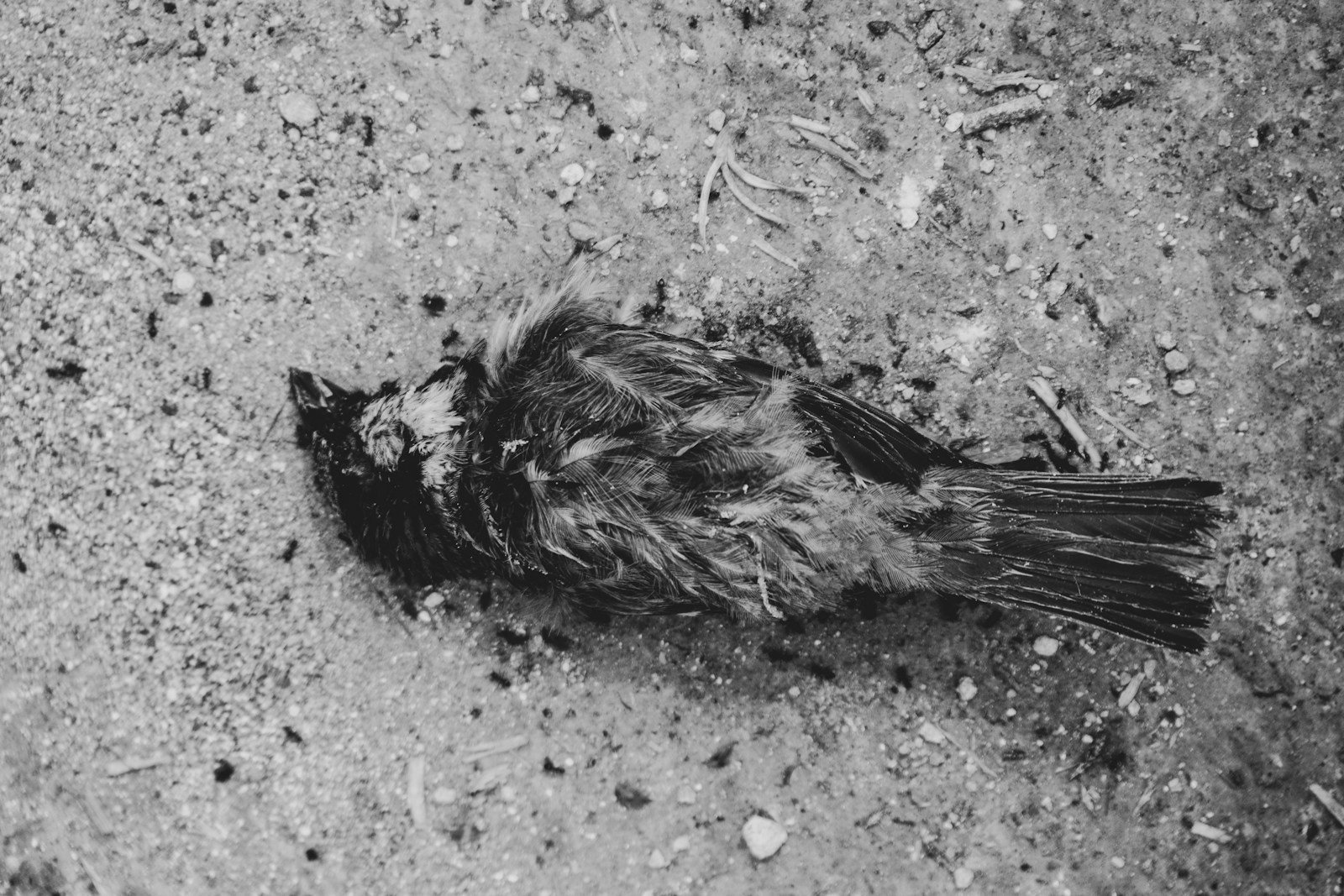In the Bible, symbolism is used as a means to convey spiritual messages. The interpretation of these symbols is crucial in understanding the deeper meaning behind biblical texts. Dead birds are one such symbol that holds significant biblical symbolism, reflecting on impermanence, mortality, and transformation.
Through exploring the significance of dead birds in biblical texts and examining specific biblical events associated with birds, we gain a better understanding of the lessons and teachings conveyed through this imagery.
Key Takeaways:
- Dead birds hold significant biblical symbolism, representing impermanence and mortality.
- Biblical events like Noah’s Ark and Elijah’s journey feature prominent bird species like the raven and dove, symbolizing transformative journeys or rebirth.
- Dead birds serve as omens and messages, reminding individuals of the transient nature of life and bringing peace and comfort in times of grief.
Table of Contents
Symbolism in the Bible
The Bible is filled with symbolic imagery, using metaphors and allegories to convey profound spiritual messages. Interpreting these symbols is crucial in understanding the meaning behind biblical texts. Dead birds are one such symbol that holds great significance and has been interpreted in various ways throughout the Old and New Testament.
In the Bible, dead birds are often perceived as omens of death or warnings of impending doom, signaling God’s judgment or wrath. They have also been used to symbolize mourning, grief, and the transient nature of life on earth. However, dead birds can also serve as metaphors for redemption, renewal, and divine messages from God.
Understanding the significance of the symbolism of dead birds requires examining the cultural, historical, and religious context of each specific reference. For example, the use of the raven and the dove in the story of Noah’s Ark highlights the importance of faith and obedience, while the dead dove in the lament of the prophet Hosea serves as a powerful visual of destruction and despair.
The Biblical Significance of Dead Birds
The symbolism of dead birds in the Bible goes beyond just literal interpretations. These references often carry a deeper spiritual meaning, reminding believers of the impermanence of life and the importance of faith, hope, and love. Whether perceived as omens of death or divine messages of redemption and renewal, the symbolism of dead birds in the Bible remains a powerful tool for conveying spiritual truths and inspiring contemplation and reflection.
Birds as Symbols of Death
Birds have been associated with death and omens since ancient times, and this symbolism carries into Christian scriptures as well. In the Bible, dead birds are often mentioned in reference to mortality and impending doom, serving as a reminder of the finite nature of life.
For example, Ecclesiastes 12:5 describes how “people are frightened by high places and dangers on the road… before the silver cord is severed, and the golden bowl is broken… and the dust returns to the ground it came from, and the spirit returns to God who gave it.” Here, the image of a silver cord being severed is often interpreted to symbolize the separation of the soul from the body at death, and the returning of the dust to the ground is a reminder of our mortality.
In Matthew 10:29-31, Jesus tells his disciples that “not even a single sparrow can fall to the ground without your Father knowing it… so don’t be afraid; you are more valuable to Him than a whole flock of sparrows.” While this passage emphasizes God’s love and care for His creations, the mention of a sparrow falling to the ground can also be interpreted as an omen of impending death.
Overall, the association of birds with death in Christian scriptures serves as a reminder of the fragility of life and the importance of spiritual preparedness for the afterlife.
The Raven and the Dove: Biblical Birds
Two bird species stand out as symbols of great biblical significance: the raven and the dove. Both play crucial roles in significant biblical events and serve as metaphors that convey spiritual and metaphorical messages. In biblical interpretation, these birds reflect themes of redemption, renewal, and impermanence, among others, depending on the context in which they appear.
The Raven
The raven is a large black bird known for its scavenging and predatory behavior. It appears several times in the Bible, but its most significant role is tied to the story of Noah’s Ark. As the floodwaters recede, Noah sends out a raven to scout for dry land, but the bird never returns. According to biblical tradition, the raven’s failure to find a resting place for itself symbolizes despair, separation, and sorrow. The raven, therefore, serves as a reminder of the consequences of disobedience and the redeeming power of repentance.
The Dove
The dove, in contrast, is a gentle bird associated with peace, purity, and renewal. It appears in various biblical narratives, but its most notable role is linked to the story of Noah’s Ark. Noah sends out a dove from the ark three times to find dry land. The first two times, the dove returns, indicating that the waters have not yet receded. The third time, the dove comes back with an olive branch, signaling that the flood is ending and new life is possible. The dove, therefore, symbolizes hope, promise, and the potential for a new beginning.
| Bird | Symbolic Attributes | Biblical Narrative |
|---|---|---|
| Raven | Despair, separation, sorrow | Noah’s Ark |
| Dove | Peace, purity, renewal | Noah’s Ark |
| Raven | Provision, guidance, protection | Elijah’s Journey |
The dove also serves as a symbol of the Holy Spirit in the New Testament, primarily in the story of Jesus’ baptism when a dove descends from heaven as a sign of divine approval. In Christian symbolism, the dove represents purity, peace, and grace.
The raven and the dove are two examples of the spiritual significance of birds in the Bible. Their symbolic attributes and roles in biblical narratives convey important spiritual messages that continue to resonate across time.
Dead Birds as Omens
In the Bible, the presence of dead birds is believed to be a powerful omen, often signaling a warning or sign of impending danger. Their appearance can be interpreted as a message from a higher power, conveying an urgent need for change or a call to action.
One example of this can be found in the book of Hosea, where the prophet laments over the sinfulness of Israel and predicts their downfall. In chapter 4, verse 3, he states, “Therefore the land will mourn, and everyone who dwells in it will waste away with the beasts of the field and the birds of the heaven; even the fish of the sea will be taken away.”
Here, dead birds are seen as a symbol of mourning and destruction, highlighting the dire consequences of disobeying God’s commandments. Similarly, in the book of Revelation, John describes a scene of judgment where birds of prey gather to feast on the bodies of the wicked (chapter 19, verse 17-18).
“Dead birds are seen as a symbol of mourning and destruction, highlighting the dire consequences of disobeying God’s commandments.”
Interpreting dead birds as omens requires a deep understanding of biblical texts and the cultural context in which they were written. It’s essential to consider each passage’s intended message before drawing any conclusions about the significance of dead birds.
The Sparrow and the Peacock
In addition to being viewed as omens of misfortune, specific types of birds mentioned in the Bible are associated with spiritual significance as well. For example, sparrows are linked to God’s intimate knowledge of His creation, while peacocks are seen as a symbol of beauty and resurrection.

| Bird Species | Symbolic Association |
|---|---|
| Sparrow | God’s intimate knowledge of creation (Matthew 10:29) |
| Peacock | Beauty and resurrection (Job 39:13) |
These examples demonstrate the complexity of understanding bird symbolism in the Bible and how it can vary depending on the context in which it’s used.
In conclusion, the belief in dead birds as omens is an essential aspect of biblical symbolism, providing powerful messages of warning and divine communication. While these messages can be challenging to interpret, they offer a unique perspective on the importance of spiritual growth and obedience in living a fulfilling life.
Lessons in Impermanence and Mortality
Dead birds symbolize the transient nature of life in the Bible. These birds offer spiritual lessons and teachings related to impermanence and mortality. Through their representation as fleeting and unpredictable animals, they remind us of our own mortality. One example is the parable of the rich fool in Luke 12:16-21, where a farmer stores his crops thinking he has many years to live, but God warns him that he will die that very night, and leaves him with the reminder: “This is how it will be with whoever stores up things for themselves but is not rich toward God.”
In Ecclesiastes 12:6-7, dead birds serve as a reminder of our own mortality: “Remember your Creator in the days of your youth, before the days of trouble come and the years approach when you will say, ‘I find no pleasure in them’ – before the sun and the light and the moon and the stars grow dark, and the clouds return after the rain; when the keepers of the house tremble, and the strong men stoop, when the grinders cease because they are few, and those looking through the windows grow dim; when the doors to the street are closed and the sound of grinding fades; when people rise up at the sound of birds, but all their songs grow faint; when people are afraid of heights and of dangers in the streets; when the almond tree blossoms and the grasshopper drags itself along and desire no longer is stirred. Then people go to their eternal home and mourners go about the streets.”
Dead birds also serve as a reminder that all life eventually ends and transitions to something new. Similar to the life cycle of a decaying bird, the cycles of life and death in nature represent the constant transformation of all things. Romans 8:20-21 describes the connection between death and new life: “For the creation was subjected to frustration, not by its own choice, but by the will of the one who subjected it, in hope that the creation itself will be liberated from its bondage to decay and brought into the freedom and glory of the children of God.”
Redemption and Renewal
In the Bible, dead birds are often associated with the themes of redemption and renewal. Through their death, birds are transformed, serving as a metaphor for a journey of growth and transformation.
One example in the Bible is the eagle, which is known for its ability to regenerate itself by shedding its feathers and growing new ones. This process is often seen as a symbol of spiritual renewal and transformation, and is referenced throughout the Old and New Testaments.
Another example is the story of the Phoenix, a mythical bird that emerges from its own ashes after burning itself on a funeral pyre. The Phoenix represents resurrection and rebirth, teaching us that death is not the end, but rather a new beginning.
Through these images of dead birds, the Bible suggests that there is always hope for renewal and redemption, even in the midst of death and destruction. Through faith and perseverance, we can rise again, like the birds that emerge from death even stronger and more beautiful than before.
Mourning and Grief
Dead birds have long been associated with mourning and grief in the Bible. They serve as a symbol of loss and evoke a deep sense of sadness and sorrow. The interpretation of dead birds as a signifier of mourning can be traced back to Old Testament times.
One example of this symbolism is found in the Book of Job, where the protagonist laments his own misfortunes, saying, “My days are swifter than a weaver’s shuttle, and are spent without hope. O remember that my life is wind: mine eye shall no more see good. The eye of him that hath seen me shall see me no more: thine eyes are upon me, and I am not” (Job 7:6-8). Here, Job uses the metaphor of a dead bird to describe his own fleeting existence and the sense of hopelessness that comes with it.
Additionally, there are many instances in the Bible where the death of a bird is used to show how grief affects both humans and animals. For example, in Psalms 102:6-7, the psalmist writes, “I am like a pelican of the wilderness: I am like an owl of the desert. I watch, and am as a sparrow alone upon the house top.” This passage highlights the loneliness and sorrow that come with grief. The image of a solitary sparrow, perched on a rooftop, emphasizes the isolation and sadness that often accompany mourning.
Biblical accounts also describe a number of rituals and customs related to the mourning of dead birds. In Leviticus 11:13-19, for instance, the Israelites are instructed not to eat certain birds, including vultures, eagles, and ravens. This prohibition suggests a sense of reverence and respect for these creatures, even in death.
Finding Peace and Comfort
Dead birds can be startling and unsettling, yet their presence or absence can also bring comfort and peace in biblical narratives. In Psalm 102:6-7, the psalmist describes feeling isolated and abandoned “like a desert owl or a solitary sparrow” but finds solace in turning to God for redemption. Similarly, in Matthew 10:29-31, Jesus assures his disciples that even the smallest and seemingly insignificant creatures, such as sparrows, are known and valued by God, “So don’t be afraid; you are worth more than many sparrows.”
These passages and others like them highlight the idea that even in the face of death and decay, there is hope for renewal and comfort through a divine presence. The symbolism of dead birds can serve as a reminder that even in the midst of hardship, there is always a path towards redemption and inner peace.
Dead Birds as Divine Messages
In biblical accounts, deceased birds are sometimes interpreted as messages from a higher power. These prophetic visions and stories often convey specific instructions or warnings to individuals. For example, in the book of Ezekiel, a vision of dead bones being brought back to life includes ravens and birds of prey. This imagery symbolizes the Lord’s judgment on a nation and His promise of redemption.
Similarly, in the book of Revelation, several dead birds are used as divine symbols. The eagle, for instance, is associated with judgment and destruction, while the vulture represents the devouring of sinners. These birds serve as reminders of the ultimate authority of God’s will and the consequences of disobedience.
This interpretation of dead birds as divine messages highlights the importance of spiritual discernment and guidance in interpreting biblical symbolism. It reminds us to stay mindful of the spiritual significance behind seemingly mundane occurrences and to seek wisdom in all aspects of our lives.
The Importance of Interpretation
Interpretation is crucial for understanding the symbolism of dead birds in the Bible. To fully grasp the intended meaning behind the presence of deceased birds, one must consider the cultural, historical, and theological context in which they are mentioned.
For example, the interpretation of birds as symbols of death in Christian scriptures may differ in modern times compared to the time when the texts were written. Additionally, the symbolic significance of specific bird species, such as the raven and the dove, may have varied meanings depending on the historical and cultural context.
Therefore, it is essential to approach the symbolism of dead birds in the Bible with an open mind and a willingness to explore the complexities of interpretation.
Conclusion
In conclusion, the symbolism of dead birds in the Bible carries significant spiritual and metaphorical meaning. Birds have been used throughout biblical texts as symbolic representations of death, mortality, redemption, and renewal. The raven and the dove are two notable species in the Bible that hold important significance in various narratives.
Dead birds are also believed to serve as omens, convey divine messages, and offer lessons in impermanence and mortality. They are associated with mourning and grief and can provide solace and comfort to those in times of loss.
Interpretation is vital when it comes to understanding the intended meaning behind the presence of deceased birds in biblical texts. It requires an understanding of cultural, historical, and theological context.
Overall, the symbolism of dead birds in the Bible underscores the importance of spiritual reflection and contemplation on the fleeting nature of life.
FAQ
What do dead birds symbolize in the Bible?
Dead birds in the Bible symbolize various concepts, including mortality, impending doom, mourning, grief, redemption, renewal, and divine messages. They serve as metaphors and reminders of the transient nature of life and convey spiritual lessons about finding peace and comfort in the face of loss.
How are dead birds interpreted within a biblical context?
Dead birds are interpreted within a biblical context through the lens of symbolism and metaphor. Depending on the passage or narrative, deceased birds may represent specific themes such as death, mourning, divine intervention, or the impermanence of worldly existence. Interpretation requires considering cultural, historical, and theological context to discern the intended meaning.
Are birds considered symbols of death in Christian scriptures?
Yes, birds are often associated with death in Christian scriptures. Certain bird species, such as ravens and vultures, are mentioned in the Bible in connection with death and decay. The presence of deceased birds or their behavior in specific biblical events emphasizes the fragility and mortality of life.
What is the significance of the raven and the dove as biblical birds?
The raven and the dove are two prominent bird species mentioned in the Bible. The raven is associated with Noah’s Ark, where it was sent out first in search of land. It represents the endurance of life during a time of destruction. The dove, on the other hand, symbolizes peace, hope, and the Holy Spirit, as seen in the story of Noah and the return of the dove with an olive leaf.
Do dead birds serve as omens in the Bible?
Yes, dead birds are sometimes seen as omens in the Bible, indicating impending danger or divine warnings. Their presence or behavior is believed to convey a message from a higher power. Examples include the death of birds as a sign of impending judgment or destruction.
What spiritual lessons can be learned from dead birds in the Bible?
Dead birds symbolize the impermanence and fragility of life, serving as reminders to cherish each moment and find solace in the face of loss. They convey the teachings of redemption, renewal, and the transformative power of faith. Dead birds also serve as metaphors for the journey towards finding peace and comfort amidst trials.
How are dead birds associated with mourning and grief in the Bible?
Dead birds are associated with mourning and grief in the Bible as they represent the loss of life and the need for individuals to express their sorrow. Passages that mention deceased birds often depict mourning rituals and the emotional depth of grief experienced by characters.
Can dead birds bring peace and comfort in the Bible?
Yes, dead birds can bring peace and comfort in the Bible. Their presence or absence can signify divine intervention or reassurance. In certain narratives, the sight of dead birds may provide solace, symbolizing the presence of a higher power or the fulfillment of a promise.
Do dead birds convey divine messages in the Bible?
Yes, dead birds are sometimes used as a means of conveying divine messages in the Bible. They can be interpreted as signs, omens, or prophecies with specific instructions or warnings from God. These divine messages, often interpreted by prophets or individuals in scripture, carry spiritual significance and significance to the narrative.
Why is interpretation important in understanding the meaning of dead birds in the Bible?
Interpretation is crucial to understand the meaning of dead birds in the Bible because it takes into account factors such as cultural, historical, and theological context. The symbolism of dead birds can vary depending on the passage or narrative, and interpretation helps discern the intended spiritual message and metaphoric significance behind their presence or mention.

Rockin’ the faith, one verse at a time!
Growing up, the Bible’s stories deeply impacted me. Now, with over 15 years of preaching experience, I blend timeless teachings with modern technology, making them relevant for today’s world.
Bible Hub Verse is my platform to share historical insights and thought-provoking articles, exploring both familiar and uncommon Christian topics. My passion is building a welcoming online space for everyone to learn, grow in their faith, and discover the Bible’s enduring message.
Join the journey!
God bless you.





